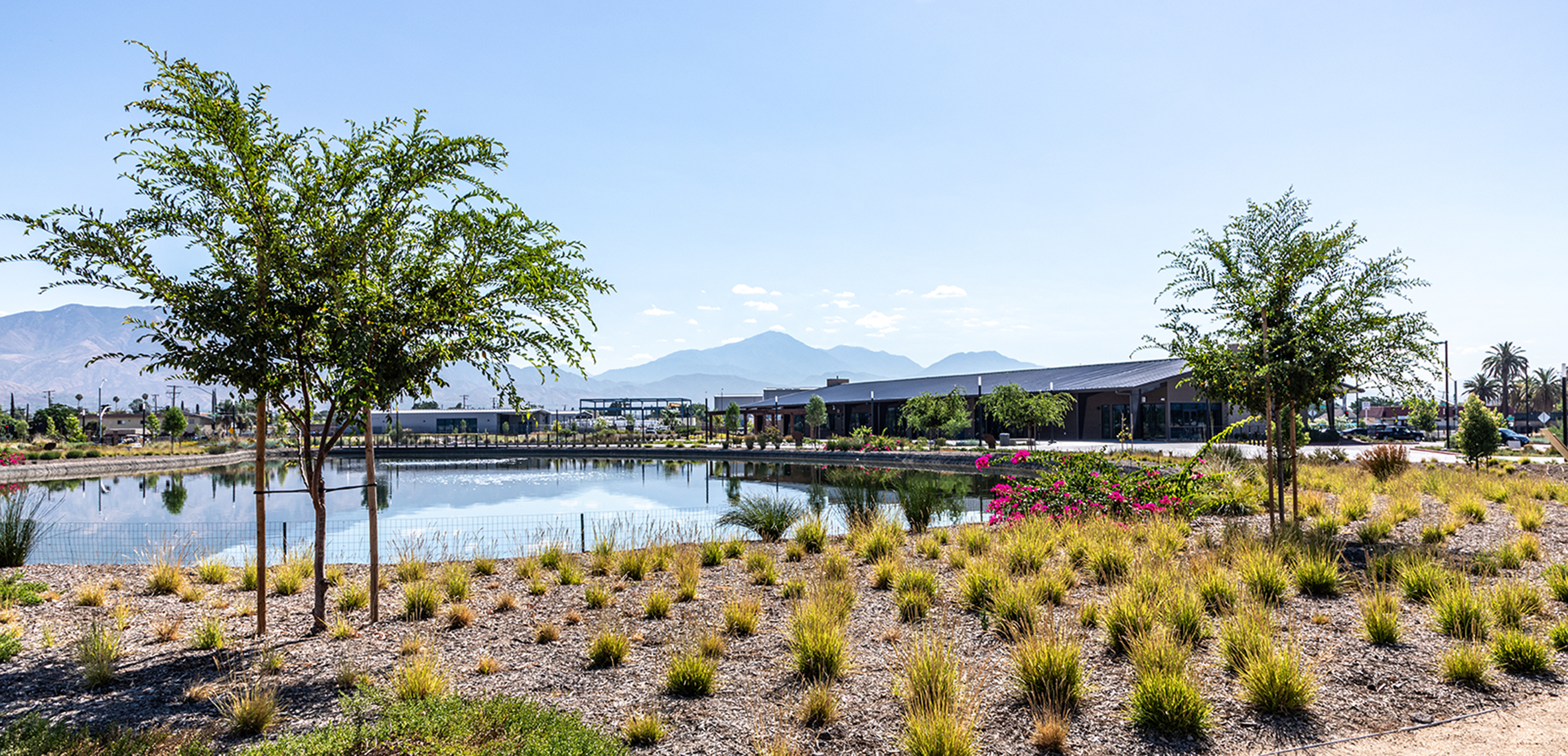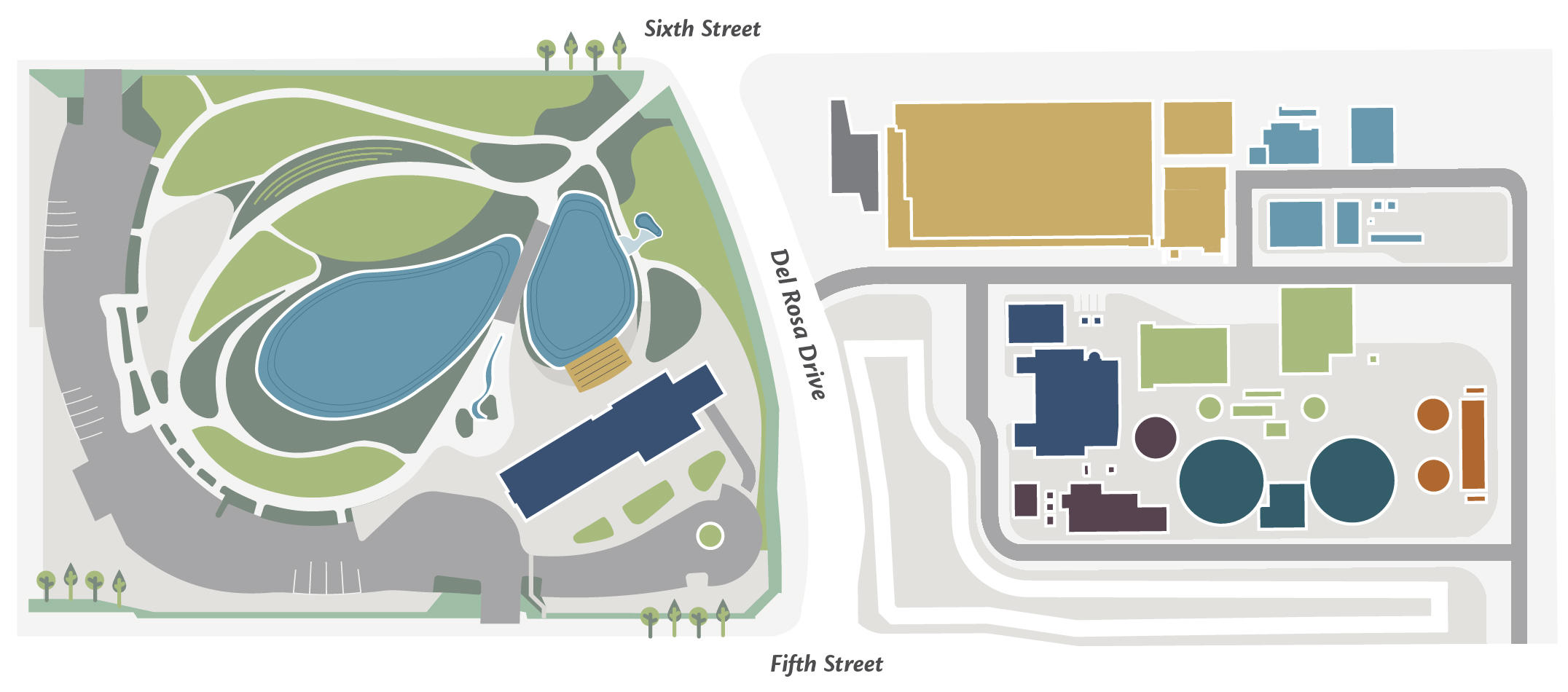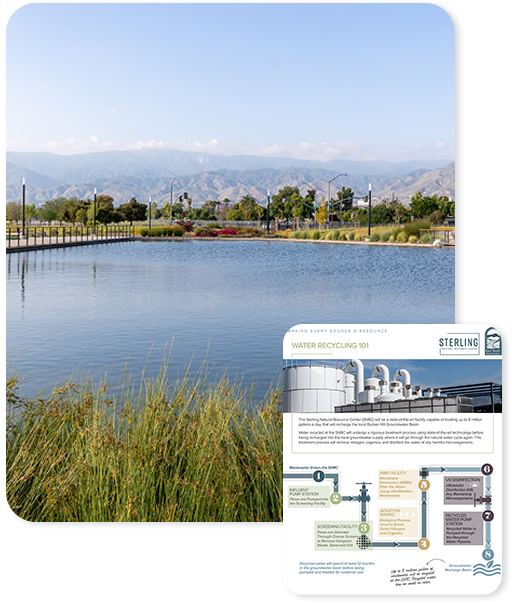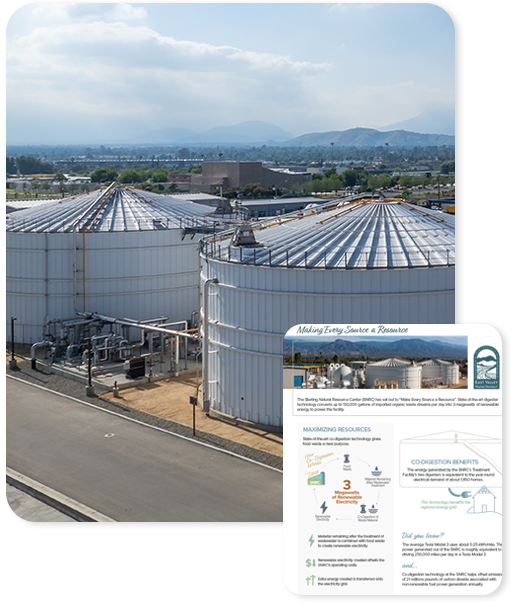Sterling Natural Resource Center
The Sterling Natural Resource Center (SNRC) is a state-of-the-art facility in San Bernardino, California, that provides a sustainable new water supply to boost the region’s water independence.

Up to 8 million gallons a day
Capable of treating up to 8 million gallons a day, the SNRC recharges the local Bunker Hill Groundwater Basin and creates new opportunities for the surrounding community in the form of:
-
Community Space with Picnic Area and Walking Paths
-
Provide a Drought-Proof Water Supply
-
Provide Street Improvements
-
Educational Training Programs
Location
The SNRC was constructed on a 20-acre parcel of land. The Treatment Facility is located on the eastern property while the Administration Center is located on the western parcel.
Sterling Natural Resource Center
25318 5th Street
San Bernardino CA 92410

Water Recycling
Replenishing the Local Water Supply
The SNRC transforms and enhances the region’s water supply by:
- Creating a new, local source of water for the community and 600,000 residents in the region.
- Replenishing the Bunker Hill Basin with recycled water, the region will be able to store hundreds of millions of gallons of water for dry years.
- This effort creates an opportunity to assist with meeting both local water agencies’ needs and environmental
commitments.


Maximizing Resources
Co-Digestion Technology
In addition to recycling wastewater, the SNRC will use co-digestion technology to give food waste a new purpose and maximize this resource to create renewable electricity. There may be a potential to use the material that remains after energy generation to produce fertilizer.
This enhancement represents a significant improvement to the project by allowing the SNRC to produce enough renewable electricity to meet the facility’s energy needs, with additional electricity transferred onto the energy grid.
The SNRC is Fully Operational
Award-Winning Facility
The SNRC’s Wastewater Treatment Facility and Administrative Center are the first of its
kind in California and has been recognized with prestigious industry-related awards:
- CA Association of Sanitation Agencies - Outstanding Capital Project
- DBIA - Western Pacific Region Award - Design Excellence
- Association of California Water Agencies - Clair A. Hill Award
- American Public Works Association - Project of the Year: Drainage, Water, and Wastewater
Watch: Sterling Natural Resource Center Facility Overview
Project Funding
Funding for the Sterling Natural Resource Center project has been provided in full or in part by the Proposition 1 - the Water Quality, Supply, and Infrastructure Improvement Act of 2014 and the Clean Water State Revolving Fund through an agreement with the State Water Resources Control Board.
California’s Clean Water State Revolving Fund
California’s Clean Water State Revolving Fund is capitalized through a variety of funding sources, including grants from the United States Environmental Protection Agency and state bond proceeds.
Urban Greening Program
The Urban Greening Program is part of California Climate Investments, a statewide program that puts billions of cap-and-trade dollars to work reducing greenhouse gas emissions, strengthening the economy and improving public health and the environment—particularly in disadvantaged communities. The cap-and-trade program also creates a financial incentive for industries to invest in clean technologies and develop innovative ways to reduce pollution.
California Climate Investment
California Climate Investment projects include affordable housing, renewable energy, public transportation, zero-emission vehicles, environmental restoration, more sustainable agriculture, recycling and much more. At least 35 percent of these investments are made in disadvantaged and low-income communities. For more information, visit California Climate Investments.
FAQs
Reclaimed water or recycled water, is wastewater (sewage) that is treated to remove solids and certain impurities, and used in many settings for sustainable landscaping irrigation or to recharge groundwater aquifers. The purpose of these processes is sustainability and water conservation, rather than discharging the treated water to surface waters such as rivers and oceans. The Sterling Natural Resource Center is a reclamation facility which will be used to replenish the local groundwater basin.
In an effort to select a name that represented the long history of the region and the resource the facility will be, the team looked to the past. The Sterling Natural Resource Center is named after A.E. Sterling, a local visionary and active valley leader.
In addition, one definition of sterling is: "of the highest quality."
The SNRC intends to be a community asset and a good neighbor. The SNRC facility includes:
- Offices to serve the wastewater treatment facility
- Integration with the community through compatible land use and aesthetically pleasing design
- Administration Center that provides:
- Publicly accessible open space and water features
- Multipurpose spaces for emergency and community uses
- Opportunities for the community and local students with an interpretive center
The SNRC will use Membrane BioReactors, which is a process that combines filtration with biological treatment to reduce the amount of space needed to operate the facility. Therefore, allowing for the reclamation process to be completely self-contained.
As part of the SNRC’s commitment to being a good neighbor, the project’s design includes extensive state-of-the-art vessel systems to help prevent unwanted odors. These systems will “scrub” the air so that there is no noticeable odor coming from the facility. Water produced by the SNRC will be cleaned and disinfected through multiple processes. Additionally, recycled water is clear and has no smell.
The SNRC incorporated state-of-the-art digesters to turn 130,000 gallons per day of organic waste into 3 megawatts of renewable energy. East Valley Water District will import the material from local waste processors, due to the high concentration of material needed. At this time, there will be no acceptance of local drop-offs of household organic waste.